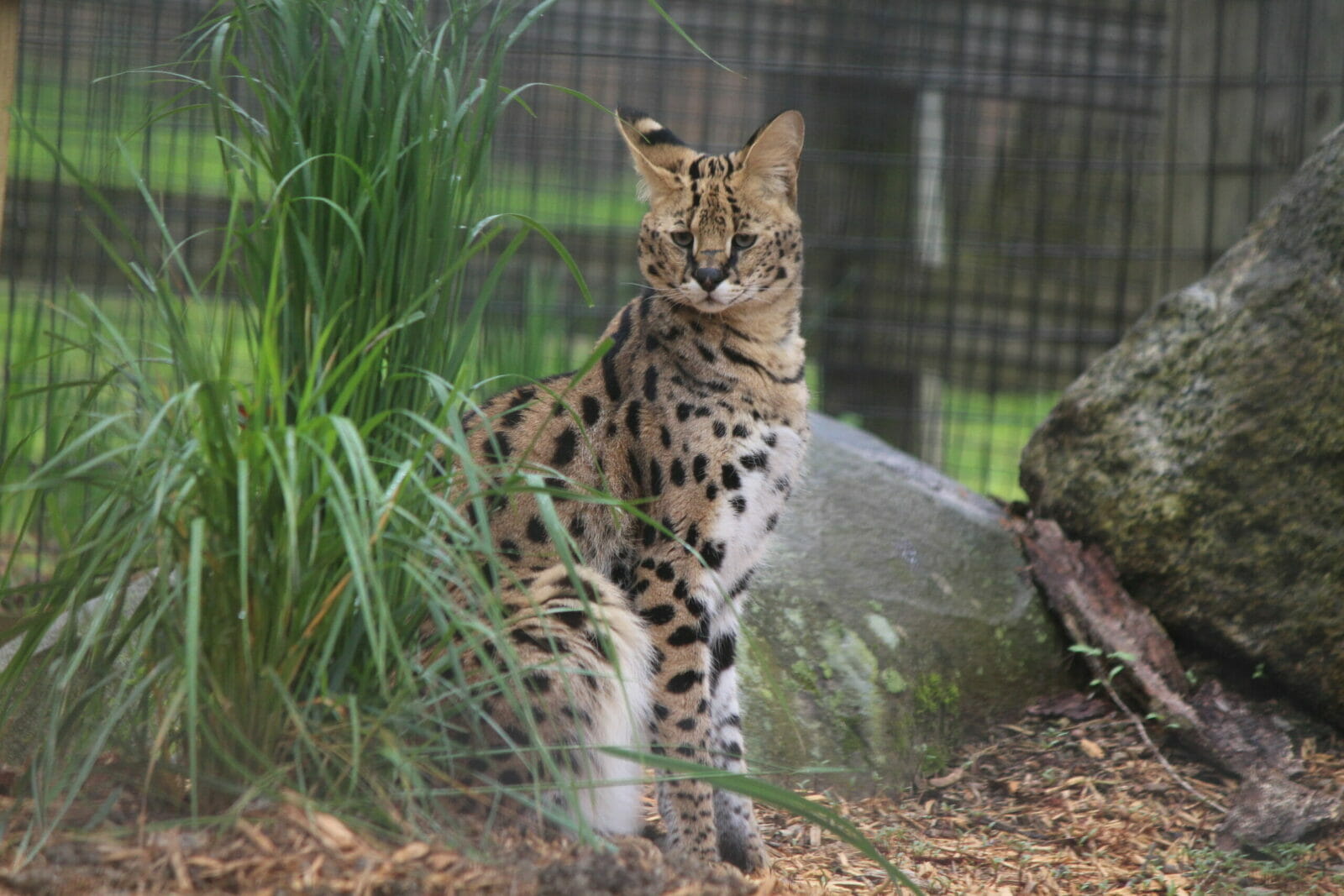
Serval
Leptailurus servalClass: Mammalia Order: Carnivora Family: Felidae
Size
Weight: 18-40 lbs
Lifespan
Lifespan (Wild): up to 10 years
Lifespan (Captivity): up to 20 years
Diet
These carnivores prey on rodents, small birds, reptiles, frogs, and insects
Habitat & Range
Semi-arid forests, grasslands of Sub-Saharan Africa
Interesting Facts
- These small, slender cats are notable for their spotted coats, big ears, and long legs, They are sometimes called “giraffe cats” due to their long legs and spots.
- Small mammals such as rodents make up about 90% of their diet. Servals have a success rate of 48-50% when hunting prey. This is higher than most cats. Lions, for example, have a success rate of about 19%.
- Servals have the longest legs and largest ears relative to their body size of any cat. Servals use their long legs to leap up to 9 feet into their air to catch birds. Their acute sense of hearing allows them to locate rodents and other prey.
- Servals are generally crepuscular, meaning active early in the morning and during the evening, and nocturnal, meaning active at night.
Conservation Status
Least Concern
Threats
Servals, while considered least concern, are threatened by loss of habitat and poaching.
